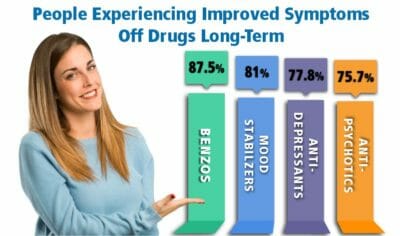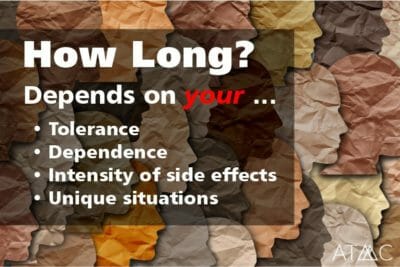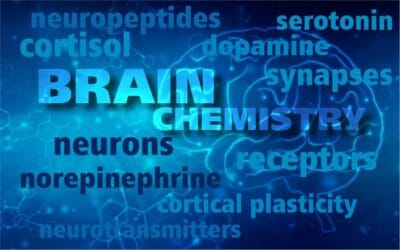1. FDA Label Klonopin tablets (clonazepam) [approved 6/4/1975, revised Oct 2017] [cited 2023 May 22]
2. O’brien CP. Benzodiazepine use, abuse, and dependence. J Clin Psychiatry. 2005;66 Suppl 2:28-33. PMID: 15762817.[cited 2023 May 22]
3. Mattson MP, “Excitotoxins- an overview.” Science Direct [published online, N.D.] [cited 2023 May 22]
4. Almgren M, Källén B, Lavebratt C. Population-based study of antiepileptic drug exposure in utero–influence on head circumference in newborns. Seizure. 2009 Dec;18(10):672-5. doi: 10.1016/j.seizure.2009.09.002. Epub 2009 Oct 13. PMID: 19828334. [cited 2023 May 22]
5. NIDA/NIH authors, “Benzodiazepines and Opioids” [publiished online 2018 Mar 15] [cited 2023 May 22]
6. “Drug Scheduling” U.S. Drug Enforcement Administration. [published online, N.D.] [cited 2023 May 22]
7. Pétursson H. The benzodiazepine withdrawal syndrome. Addiction. 1994 Nov;89(11):1455-9. doi: 10.1111/j.1360-0443.1994.tb03743.x. PMID: 7841856.[cited 2023 May 22]
8. Brett J, Murnion B. Management of benzodiazepine misuse and dependence. Aust Prescr. 2015;38(5):152-155. doi:10.18773/austprescr.2015.055 [cited 2023 May 22]
9. Lader M. Benzodiazepine harm: how can it be reduced? Br J Clin Pharmacol. 2014 Feb;77(2):295-301. doi: 10.1111/j.1365-2125.2012.04418.x. PMID: 22882333; PMCID: PMC4014015. [cited 2023 May 22]
10. Chouinard G. Issues in the clinical use of benzodiazepines: potency, withdrawal, and rebound. J Clin Psychiatry. 2004;65 Suppl 5:7-12. PMID: 15078112. [cited 2023 May 22]
11. Nelson J, Chouinard G. Guidelines for the clinical use of benzodiazepines: pharmacokinetics, dependency, rebound and withdrawal. Canadian Society for Clinical Pharmacology. Can J Clin Pharmacol. 1999 Summer;6(2):69-83. PMID: 10519733. [cited 2023 May 22]
12. Pimlott NJ, Hux JE, Wilson LM, Kahan M, Li C, Rosser WW. Educating physicians to reduce benzodiazepine use by elderly patients: a randomized controlled trial. CMAJ. 2003 Apr 1;168(7):835-9. PMID: 12668540; PMCID: PMC151988. [cited 2023 May 22]
13. FDA Drug Information: Benzodiazepines [published online Sept 23 2020] [cited 2023 May 22]
14. FDA label Xanax (revised 20160 [cited 2023 May 22]
15. DEA Fact Sheet, “Benzodiazepines: Street Names” [online] December 2019 [cited 2023 May 22]
16. Dept. Consumer Protection, “Clonazepam” fact sheet [online] N.D. [cited 2022 June 8]
17. Ashton H. Guidelines for the rational use of benzodiazepines. When and what to use. Drugs. 1994 Jul;48(1):25-40. doi: 10.2165/00003495-199448010-00004. PMID: 7525193. [cited 2023 May 22]
18. Lader M. Short-term versus long-term benzodiazepine therapy. Curr Med Res Opin. 1984;8 Suppl 4:120-6. doi: 10.1185/03007998409109550. PMID: 6144459. [cited 2023 May 22]
19. Ashton, H, “The Ashton Manual” [ published online] [cited 2023 May 22]
20. Laskey C, Opitz B. Tinnitus associated with benzodiazepine withdrawal syndrome: A case report and literature review. Ment Health Clin. 2020;10(3):100-103. Published 2020 May 7. doi:10.9740/mhc.2020.05.100[cited 2023 May 22]
21. Bounds CG, Nelson VL. Benzodiazepines. [Updated 2020 Nov 22]. In: StatPearls [Internet]. Treasure Island (FL): StatPearls Publishing; 2021 Jan. Available from: https://www.ncbi.nlm.nih.gov/books/NBK470159/[cited 2023 May 22]
22. Tapiainen V, Taipale H, Tanskanen A, Tiihonen J, Hartikainen S, Tolppanen AM. The risk of Alzheimer’s disease associated with benzodiazepines and related drugs: a nested case-control study. Acta Psychiatr Scand. 2018 Aug;138(2):91-100. doi: 10.1111/acps.12909. Epub 2018 May 31. PMID: 29851063. [cited 2023 May 22]
23. Rajamaki B, Hartikainen S, Tolppanen AM. Psychotropic Drug-Associated Pneumonia in Older Adults. Drugs Aging. 2020 Apr;37(4):241-261. doi: 10.1007/s40266-020-00754-1. PMID: 32107741; PMCID: PMC7096389. [cited 2023 May 22]
24. Haefely W. Benzodiazepine interactions with GABA receptors. Neurosci Lett. 1984 Jun 29;47(3):201-6. doi: 10.1016/0304-3940(84)90514-7. PMID: 6147796. [cited 2023 May 22]
25. Petit J, Sansone RA. A case of interdose discontinuation symptoms with venlafaxine extended release. Prim Care Companion CNS Disord. 2011;13(5):PCC.11l01140. doi:10.4088/PCC.11l01140 [cited 2023 May 22]
26. NIH, “Benzodiazepines and Opioids” [information letter published online] [cited 2023 May 22]
27. Welch TR, Rumack BH, Hammond K. Clonazepam overdose resulting in cyclic coma. Clin Toxicol. 1977;10(4):433-6. doi: 10.3109/15563657709046280. PMID: 862377. [cited 2023 May 22]
28. Brown JS Jr. Psychiatric issues in toxic exposures. Psychiatr Clin North Am. 2007 Dec;30(4):837-54. doi: 10.1016/j.psc.2007.07.004. PMID: 17938048. [cited 2023 May 22]
29. Costa LG, Giordano G, Guizzetti M, Vitalone A. Neurotoxicity of pesticides: a brief review. Front Biosci. 2008 Jan 1;13:1240-9. doi: 10.2741/2758. PMID: 17981626.[cited 2023 May 22]
30. Choudhary AK, Lee YY. Neurophysiological symptoms and aspartame: What is the connection? Nutr Neurosci. 2018 Jun;21(5):306-316. doi: 10.1080/1028415X.2017.1288340. Epub 2017 Feb 15. PMID: 28198207. [cited 2023 May 22]
31. Basit H, Kahwaji CI. Clonazepam. [Updated 2021 Dec 29]. In: StatPearls [Internet]. Treasure Island (FL): StatPearls Publishing; 2022 Jan-. Available from: https://www.ncbi.nlm.nih.gov/books/NBK556010/ [cited 2023 May 22]
32. Alicja Lerner, Michael Klein, Dependence, withdrawal and rebound of CNS drugs: an update and regulatory considerations for new drugs development, Brain Communications, Volume 1, Issue 1, 2019, fcz025 [cited 2023 May 22]
33. Dokkedal-Silva V, Berro LF, Galduróz JCF, Tufik S, Andersen ML. Clonazepam: Indications, Side Effects, and Potential for Nonmedical Use. Harv Rev Psychiatry. 2019 Sep/Oct;27(5):279-289. doi: 10.1097/HRP.0000000000000227. PMID: 31385811.[cited 2023 May 22]
34. Balaram K, Marwaha R. Agoraphobia. 2022 Jun 7. In: StatPearls [Internet]. Treasure Island (FL): StatPearls Publishing; 2022 Jan–. PMID: 32119274. [cited 2023 May 22]
35. Citkowska-Kisielewska A, Rutkowski K, Sobański JA, Dembińska E, Mielimąka M. Anxiety symptoms in obsessive-compulsive disorder and generalized anxiety disorder. Psychiatr Pol. 2019 Aug 31;53(4):845-864. English, Polish. doi: 10.12740/PP/105378. Epub 2019 Aug 31. PMID: 31760413. [cited 2023 May 22]
36. Roche Product Monograph Rivotril (clonazepam) [approval revised July 5, 2021] [cited 2023 May 22]

 Klonopin can expect the process to take some time and should be scheduled properly for a safe and gentle cessation experience. Many people choose inpatient care. Trying to keep working or going to school while at the same time trying to accomplish clonazepam withdrawal would be exhausting, and next to impossible. A much better approach is taking the time to focus on rest and recovery. Never abruptly stop taking Klonopin as prescribed, but seek medical guidance and oversight to help manage a gradual reduction of the dosage over time.
Klonopin can expect the process to take some time and should be scheduled properly for a safe and gentle cessation experience. Many people choose inpatient care. Trying to keep working or going to school while at the same time trying to accomplish clonazepam withdrawal would be exhausting, and next to impossible. A much better approach is taking the time to focus on rest and recovery. Never abruptly stop taking Klonopin as prescribed, but seek medical guidance and oversight to help manage a gradual reduction of the dosage over time.
 Prescription drug dependence is a medical problem, not a moral problem, but patients sometimes end up on the receiving end of criticism for their predicament instead of medical assistance. Compassionate, professional help is key to recovery. At our holistic. medically staffed center, we strive to provide safe and compassionate Klonopin withdrawal, as well as
Prescription drug dependence is a medical problem, not a moral problem, but patients sometimes end up on the receiving end of criticism for their predicament instead of medical assistance. Compassionate, professional help is key to recovery. At our holistic. medically staffed center, we strive to provide safe and compassionate Klonopin withdrawal, as well as  Long-term success is supported by the extraction of excitotoxins. One example of a common excitotoxin is used in pesticides, such as organophosphates. This type of toxic accumulation can affect acetylcholinesterase enzymes, which in turn causes overstimulation of neuronal pathways.3,28
Long-term success is supported by the extraction of excitotoxins. One example of a common excitotoxin is used in pesticides, such as organophosphates. This type of toxic accumulation can affect acetylcholinesterase enzymes, which in turn causes overstimulation of neuronal pathways.3,28







